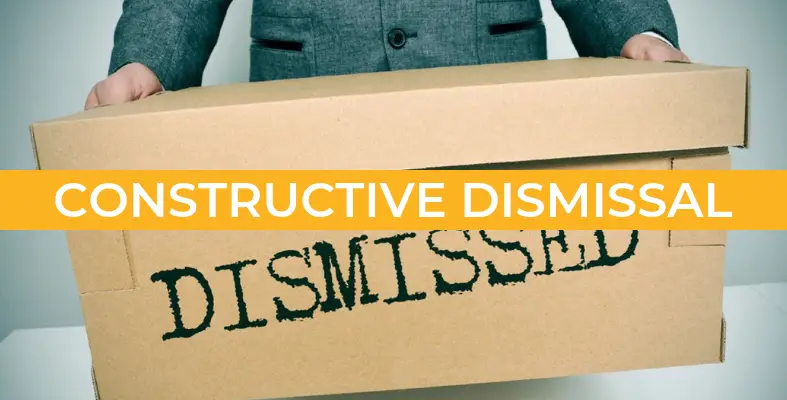How to exit an employee without a constructive dismissal claim

Businesses often struggle when it comes to dealing with a difficult employee that needs to go.
And, if this is right for the business, there are ways to ‘manage’ an employee out of the
business. (Even though this term is widely discouraged these days.)
But here’s the risk – you could face a constructive dismissal claim if you don’t handle it
correctly. That means the employee could take you to a tribunal, claiming they were
forced to resign due to unfair treatment, which could cost you thousands – a situation
no business wants to be in.
So, how do you exit an employee doing everything you can to avoiding a constructive
dismissal claim?.
Understand what constructive dismissal is
Constructive dismissal occurs when an employee resigns because their employer has made fundamental changes to their working conditions or created a hostile work environment, effectively forcing them to leave.
Under UK law, constructive dismissal is covered by the Employment Rights Act 1996 and is treated as a form of unfair dismissal.
Constructive dismissal looks like this…
• Unlawful changes to pay or benefits
• Significant changes to job role or duties
• Unreasonable changes to working hours or location
• Discriminatory behaviour
• Toxic or hostile work environment
• Failure to address grievances
• Forcing resignation
Create fair dismissal grounds based on performance or capability
Simply put, you can’t just force an employee out. There needs to be fair grounds for their dismissal. You give yourself the best chance of creating those fair grounds by:
Setting clear expectations – Make that the employee understands what is required of them. If performance is the issue, provide specific and measurable targets.
Providing support and opportunities to improve – This could include additional training, mentoring or reasonable adjustments, where appropriate.
Using formal performance management procedures – If they are not meeting expectations, follow your company’s disciplinary or capability process.
Document everything – Keep records of conversations, warnings and any support offered. A paper trail can be your saviour if a claim is made.
If the employee fails to improve despite support, you may have grounds for a fair dismissal based on performance or capability.
Consider alternative exit strategies
If it’s clear that the employment relationship is no longer working, but you want to avoid a drawn-out dismissal process, consider:
Mutual agreement – Sometimes, an honest conversation leads to a mutual decision that the employee should move on.
Settlement agreement – Offering a financial package in exchange for a resignation and a legally binding contract can be a clean exit.
Redeployment – If they struggle in one role, could they be better suited elsewhere?
Always get expert HR advice
Before you do anything, please seek expert HR and legal advice. It will be worth it 100%.
You can exit employees fairly, legally and without recourse with the right support. Muddling through or rushing the process could lead to hefty fines at an employment tribunal, a situation all businesses want to avoid.
If you need help addressing an issue like this, book a free confidential chat with Kat here: https://tidycal.com/kat3/20-minute-exploration-call20241205142253
Author's Bio
Kat Derbyshire is the Founder of Black Kat HR Ltd.
She is a BMC Trusted Partner.
Black Kat HR are an independent HR consultancy who work with a variety of companies both on one-off projects and on a retainer basis.
An expert in her field, Kat can be contacted on [email protected]
